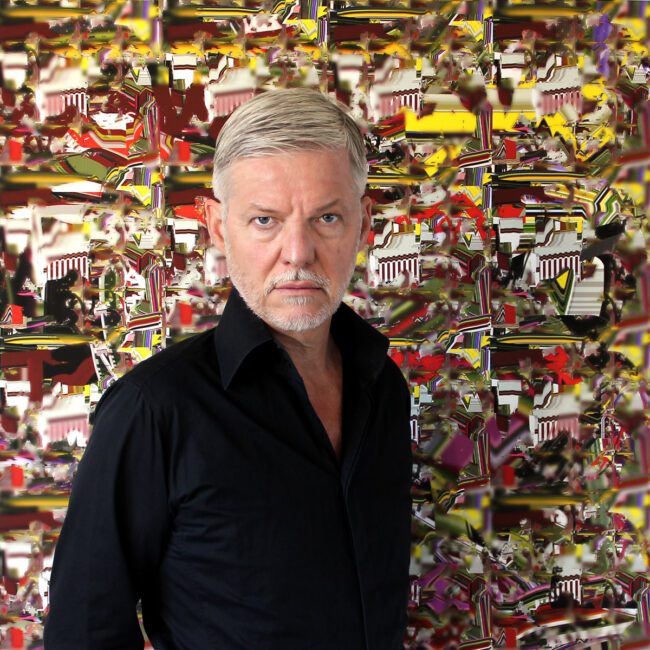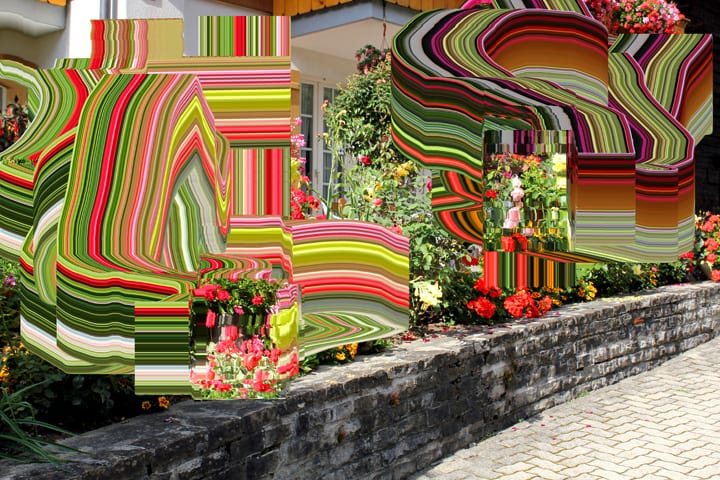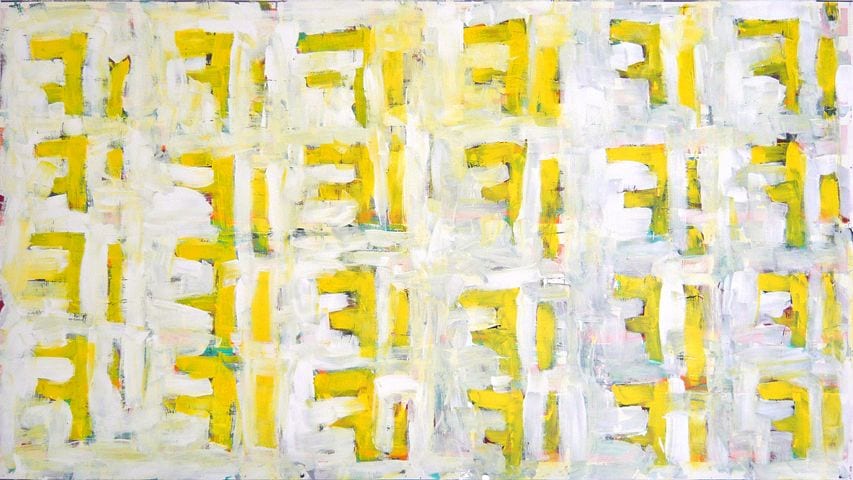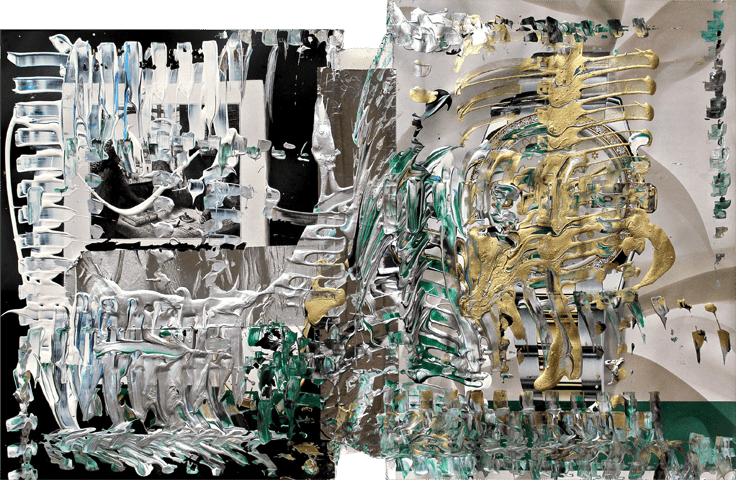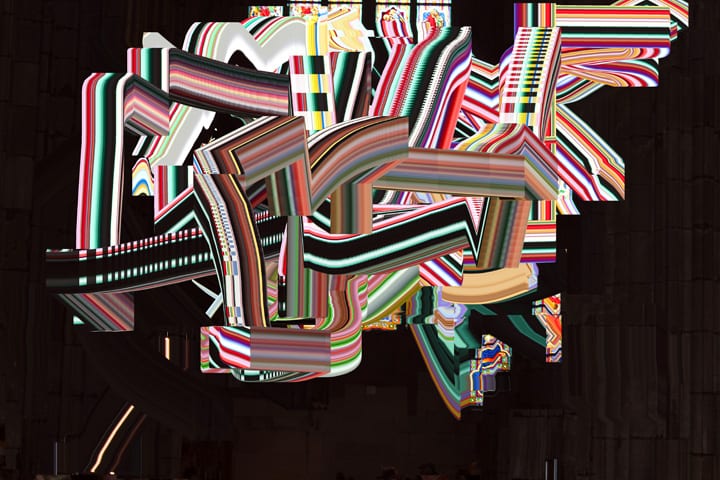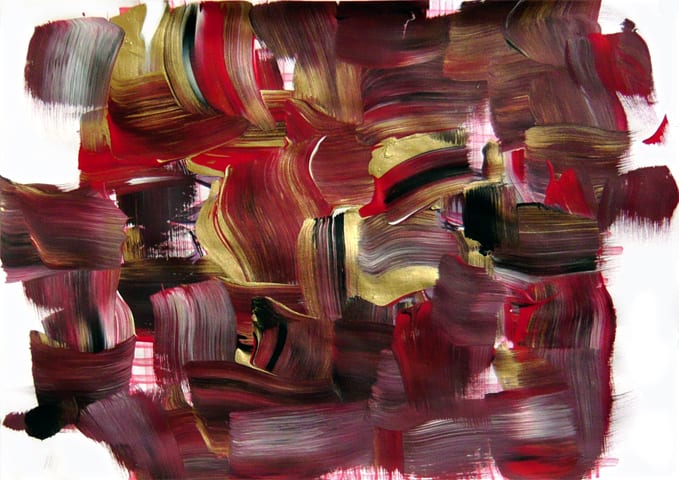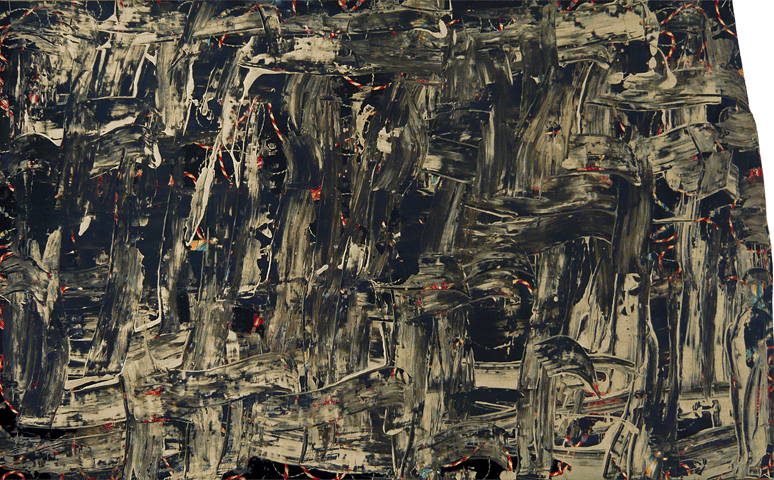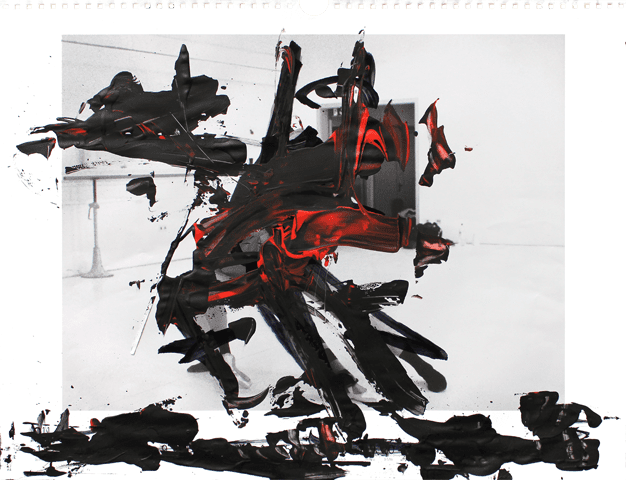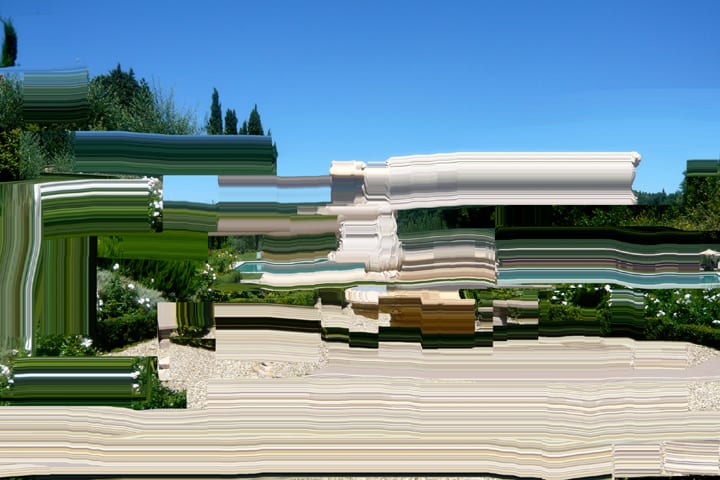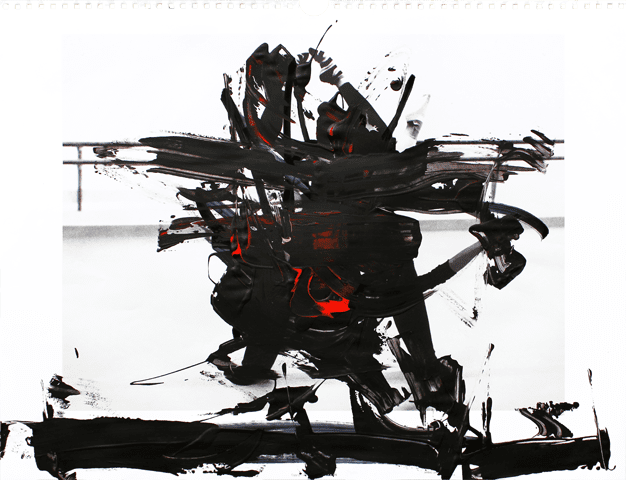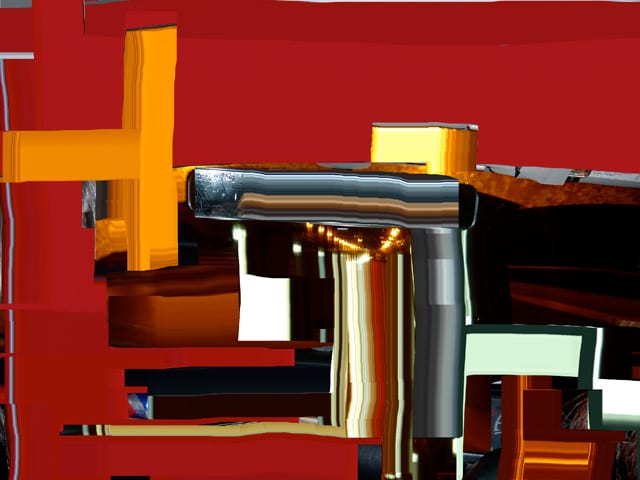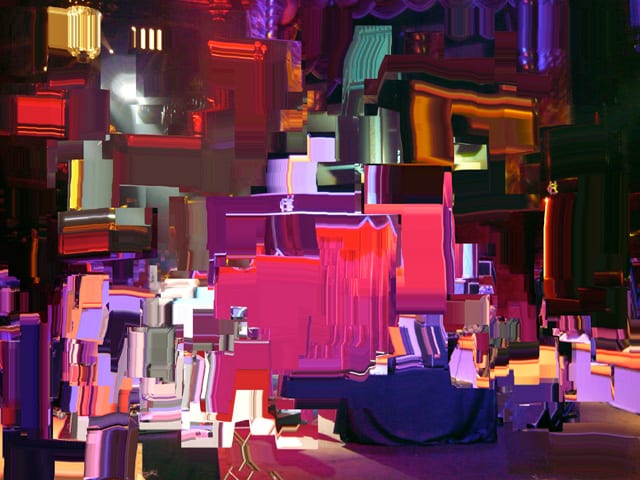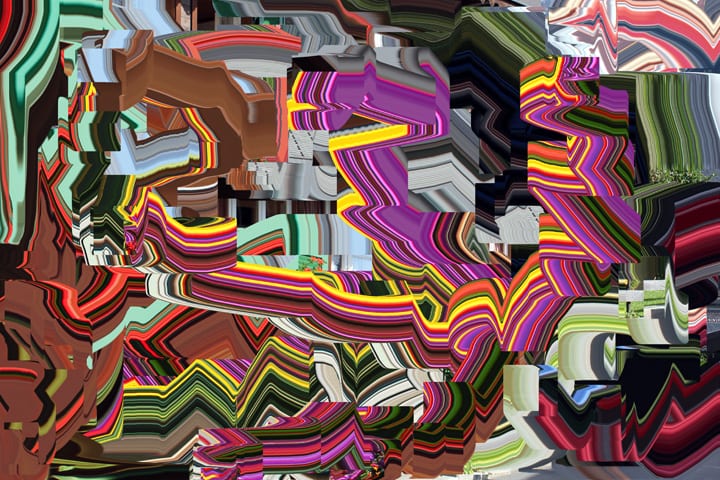Tom Durston spoke with Wolfgang Voigt about his deep ties to popular culture, American Abstract Expressionism, Kompakt, and the many monikers that have shaped his vast musical output. Our conversation explores how these influences converge into the unmistakable abstract language that defines both his sound and visual art.
For this feature, Voigt has shared two exclusive videos and a selection of images from his unreleased Rueckverzauberung series. The video for his Wassermann project, Unheilig (Kardinal Meissner Mix) – created by longtime collaborator Petra Hollenbach, whose animation work powers the live GAS visual shows at venues such as The Barbican and MUTEK – appears here alongside Du Musst Nichts Sagen (Informel Mix), a video installation Voigt produced specifically for this feature.
The article also presents a curated set of past and recent artworks. The Rueckverzauberung (“Enchanted”) works are hand-painted record sleeves for a GAS-like ambient album, created using mixed media: print, acrylic, felt pen, and silver tape on paper. Additional artworks from earlier periods are included, with further pieces accessible via Voigt’s official website.
Interview by Tom Durston
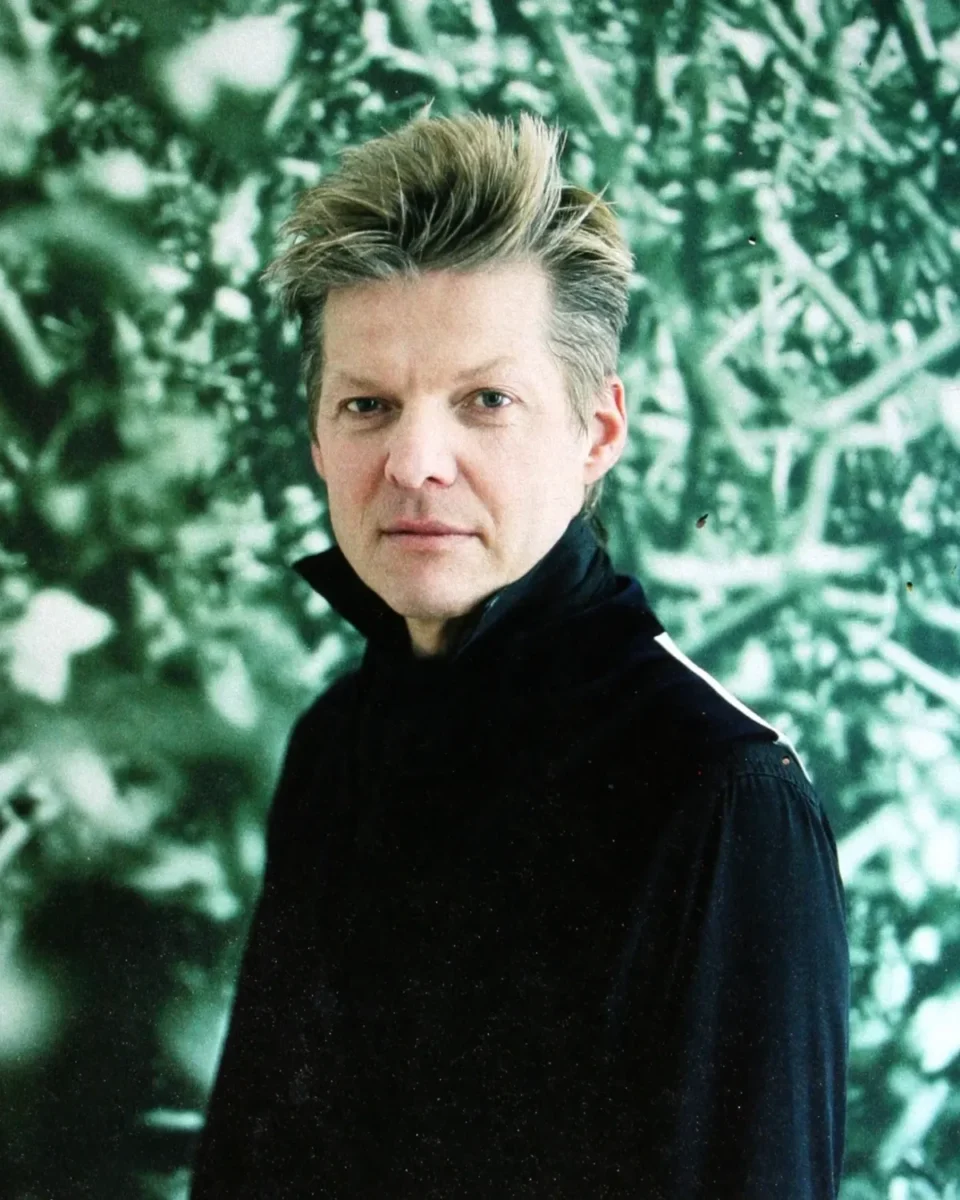
"You need to understand certain rules in order to break them. True art is understood alone through the work of art, without requiring explanation. It finds its way."
What’s your background? Where did you grow up, did you pursue any formal study, and what first sparked your interest in the arts?
My background is black and white. I was born and grew up in Cologne, Germany, where I also went to school. I never studied anything. I am 100% autodidact. Music and art is my escape to freedom.
Which three elements had the greatest influence on you while you were growing up?
Nature, Pop and Escapism.
Which artists — past or present — do you admire and draw inspiration from?
In approximate, chronological, incomplete order:
Roy Black, Marc Bolan, Kraftwerk, Karl Heinz Stockhausen, Miles Davis, Bee Gees, David Bowie, Andy Warhol, Gang Of Four, Siouxie, DAF, Birthday Party, Bryan Ferry, Boy George, George Michael, Green Gartside, Paddy McAloon, Pierre Boulez, Arnold Schoenberg, Richard Wagner, Phuture, Jackson Pollock, Karl Lagerfeld, Johann Sebastian Bach, Gerhard Richter, Pierre Soulage.
Which theories of Modern Art do you respect or feel most aligned with?
You need to understand certain rules in order to break them. True art is understood alone through the work of art, without requiring explanation. It finds its way.
‘Pop’ is a theme that runs throughout your work. Artworks such as ‘Lady GaGa’ and ‘Fussball Bilder’ [Football Pictures] are products of popular culture. Kompakt records is also renowned for being a techno imprint rooted in pop, you also curate the annual Pop Ambient compilation series. – Where did this fascination with popular culture stem from?
I grew up and socialised with popular culture, likewise my colleagues and partners at Kompakt did in their own way too. Kompakt of course is primarily a Techno label. But it’s a Techno label with a pop attitude.
We’re just not a label that defines itself and its sound through musical instruments or software. Pop Ambient is Kompakt’s idea of ambient music. It’s a kind of beat-free music that sounds like pop harmonies enlarged under the microscope to abstract size.

"Pop Ambient is Kompakt’s idea of ambient music. It’s a kind of beat-free music that sounds like pop harmonies enlarged under the microscope to abstract size."
Andy Warhol pioneered Pop Art by transforming everyday cultural objects into artworks and using rapid production methods like screen printing. You work with acrylic—a material more commonly used for decorative or commercial purposes. What draws you to this format, and why adopt Pop Art techniques and subject matter in your own practice?
Pop Art also lives from citations, from relating to existing signs and myths of daily life and the pop world. Andy Warhol was a master in this field. I am not the first person, and won’t be the last, who enjoys the beautiful, brightly coloured surface of the world of goods. You want to blend with it, carry some of it over into your own universe – inflate, refine or demask it. I for my part usually want to de-interpret and reduce it to its aesthetic basic structure by covering it, focusing or compressing it. Maybe Lady Gaga for me is what Marilyn was for Warhol.
Your work features broad, gestural brushstrokes that evoke the spirit of American Abstract Expressionists like Mark Rothko and Jackson Pollock. How do you see yourself in relation to that lineage?
I agree. But more in the sense that my work, similar to Pollock’s, is very often promoted by the energy of alcohol, or, in dark phases, by depression, like Mark Rothko’s. For example Born Dead and Buried Alive
These pictures were created in the dark of night, scratched using a fork. Apart from that, on principle, I neither strive to copy a particular artist or compare myself with anyone in particular. I rather assume that a kind of kindred spirit exists between people, artists, creative people who think and feel similarly.
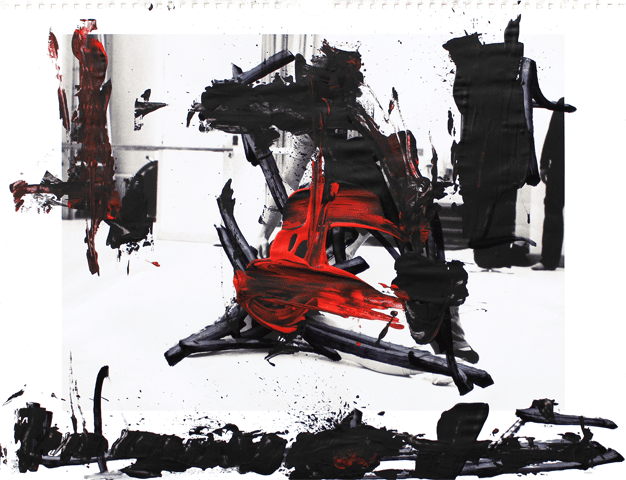
When working on your art, do you enter a particular state to disconnect from everyday reality? Is there a particular mood or environment that helps you create art?
Yes, of course. It is very helpful to disconnect more or less from reality in order to really draw on deep sources. But in a certain sense this happens automatically. When my creative depots run over they discharge themselves.
I don’t wake up in the mornings and think: Right, now I am going to make some art. I can’t do that. My ideas sort of ripen in the background and then discharge in ecstatic waves of productivity.
Do you feel you’ve developed a signature style? If so, how did it emerge – through a defining “Eureka” moment, or as a gradual evolution over time?
Of course I have a certain signature style. And my work follows certain basic approaches/ideas and rules, even if what I am searching for is often created in the very moment these rules are broken. I also had a couple of “Eureka” moments in my life, of course – both in my music as well as in my art. But the most important and illuminated moments were when I suddenly understood my own artwork. Actually, I had already had a very long journey behind me, during which I often had no idea whether I would ever reach a certain level, until – a few years ago – I suddenly realised that I had already reached it.

How do you feel about music in regards to your artistic life? Does co-running Kompakt and producing music interrupt and limit your progression in art?
Depends. On the one hand, I am able to do a lot of things at the same time during highly creative phases. On the other hand, I need to stay away from external art and music to keep my mind free for my own ideas. Fortunately, Kompakt is a pretty big and democratic company in which competent people are able to make decisions without me getting involved.
It’s clear that both art and music are central to your creative DNA, but do you feel a stronger affinity for one over the other?
I don’t have any hobbies. All my creative work stems from the same creative energy. My music and my art belong together and have the same relevance.
You photographed Königsforst and transformed those images into both a visual metaphor for your music and a dynamic live show, layering organic structures with bass and harmony. What sparked your fascination with this forest, and why did it become integral to your musical work? How do you connect music, art and nature in this context?
The photos are my own, taken in the 90’s. They show a certain focused view looking into the forest. For me, the aura of the photos, with their seeming beginning and endlessness, represent the optical equivalent of the music project GAS on whose record covers the photos are displayed. Excursions into nature have always been a similar source of inspiration for me as visits to the club or a museum.
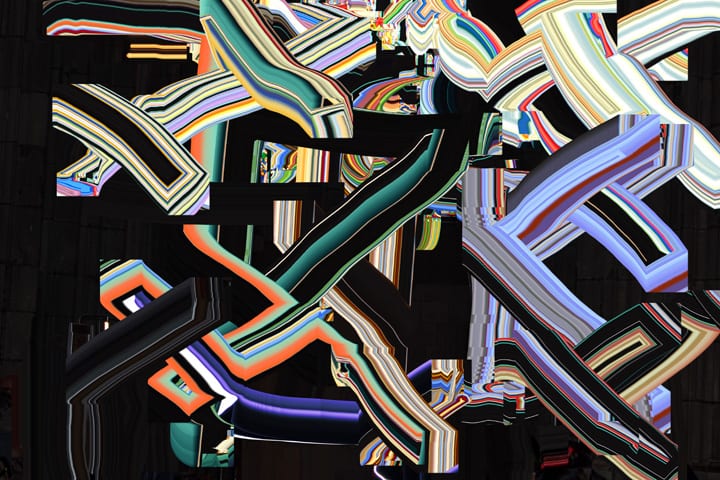
Petra Hollenbach was instrumental in shaping the GAS visual show. How did your collaboration with her begin, what role did she play in developing the project, and what is the nature of your working relationship today?
I met Petra in Cologne’s art and music scene. I had already been thinking about how to adapt the GAS Project for a live stage for quite a while. The idea to mobilise the forest motives of the record covers already existed. But it took until 2008 for me to find the right congenial partner in Petra who was able to bring the forest to life with her unmistakable individual style. The video included in this interview is a new “Wassermann” piece for which Petra made the video.
You create the artwork for your Profan imprint, with the covers reflecting your current visual aesthetic. How does the imagery on the sleeve connect to the music it accompanies?
Sometimes the artwork on the cover directly relates to the music on the record. Loops, rhythms, patterns, mechanical painting, or like in the case of GAS. But sometimes the cover is simply a platform for showing an image contradicted by the music.
Which colours evoke the strongest emotional response for you?
- black/white
- black/white/red
- black/white/red/silver
- black/white/red/gold
- black/white/red/silver/gold
You’ve described music history as a “supermarket toolbox,” a place to freely pick elements in order to create something forward-thinking. Where does this philosophy originate, and how do you apply it to your visual art?
Both in music and in art I love working with external sound and image sources (samples/scans). That’s what inspires me, it’s my way of thinking. Although I have certain aesthetic preferences in both cases, the material may also be of entirely arbitrary and purely incidental origin.
In the past, I liked to keep my “sources/citations” recognisable. Nowadays, I tend to elevate them to an unrecognisable abstract level to prevent them distracting the audience from the final product. But what always remains important is that the original material is still behind/underneath it.

"GAS fantasises about a sound body ranging somewhere between Schönberg and Kraftwerk, between bugle and bass drum. GAS is Glamrock as Wagner, Hansel and Gretel on Acid. An endless march through the undergrowth – into the disco – of an imaginary, misty forest."
Throughout the 90s you released music under a range of monikers — Mike Ink, Grungerman, M:1:5, Studio 1, GAS and your own name. Why did you adopt so many different identities, and what is the status of these projects today?
The 90’s were a very exciting and fast decade with occasionally very fast-paced music. All the projects you mention were sufficiently different in style to justify their own project names. Also, in some cases, the projects had to be adapted to the fast pace of the times because attaching them long-term to individual names would have seemed outmoded.
During the last 10 years, however, the father of all these projects, Wolfgang Voigt, brought all his children back together again and reunified them, so to speak, in one/his person – even though a couple of those project names still exist, however under different names today (Freiland, Sog, Protest) But they are only designated “sub-names” of Wolfgang Voigt, used to distinguish the music. Anonymity is no longer required.
Different personalities, names, monikers, habits, traits must all play important factors with each name. How do you explain/categorize the following monikers?:
Let me cite from the relevant info-texts:
GAS – GAS fantasises about a sound body ranging somewhere between Schönberg and Kraftwerk, between bugle and bass drum. GAS is Glamrock as Wagner, Hansel and Gretel on Acid. An endless march through the undergrowth – into the disco – of an imaginary, misty forest.
Mike Ink – a glamorous, hyped-up artificial character, who gave Acid the fun and the “pop factor” in the 90ies.
Grungerman/Wassermann – The project WASSERMANN emerged from the Profan project Grungerman, started in 1995, which attracted particular attention with its idiosyncratic combinations of abstract, broken techno rhythms and German fragments of singing. Initially created from citations sampled from traditional German popular music, Wolfgang Voigt landed his so far greatest club hit of this style with the piece WASSERMANN – W.I.R., based on the vocoder distorted piece “Eigengesang” in 1999.
Studio 1 – STUDIO 1 is a Profan sub-label founded in 1995. It is considered worldwide one of the most highly profiled forerunner labels of strictly formal minimalist concept techno. The various covers on the series limited to ten vinyl releases are entirely free of lyrics and only differ in colour.
Freiland – Freiland is, in terms of minimalism, Wolfgang Voigt’s probably most systematic music project. The “art of omission” is really and truly practiced here. In the Freiland concept, the only techno reference left is the bass drum around which one single varied sound revolves, creating a defiantly stoical minimal sound that radically questions the classical song structure in terms of arrangement and variation and over which DJs’ opinions are divided.
Founded 1998 as Profan sub-label and unofficial Studio 1 successor, Freiland progressed far beyond the original 6 Label-Maxis across various compilation contributions and remixes. The album Freiland – Klaviermusik, appearing on Profan, marks a logical step in the direction of atonality and art music.
What defines your musical mindset, and how do you tap into and express your deepest musical emotions?
Magic can be created in the very moment that the mind is separated from the will.
If you walked into a gallery as a viewer and encountered a selection of your own works, which elements would stand out to you, and how would you classify or define the art on display?
I would say: Wow, interesting how the spectrum of exhibited works develops from serial, specific, strict repetitions across evolving patterns and structures through to free, abstract forms and connections whilst nevertheless revealing an inner coherence. Opposites but connected at the same time. The art of contradiction. Surely works in music, too. Apart from that, I’d say: “Pop(Art)-educated, abstract-expressionist minimalism.”
What other subject matter do you hope to explore in your artwork and music moving forward?
Maximum artistic freedom. Creativity claims its rights and finds a way. In image and sound.
Finally, do you have any words of wisdom you’d like to share?
The reasons why we despair are irrelevant. As long as we enjoy them.
GAS vinyl is available to buy from Inverted Audio Record Store.
